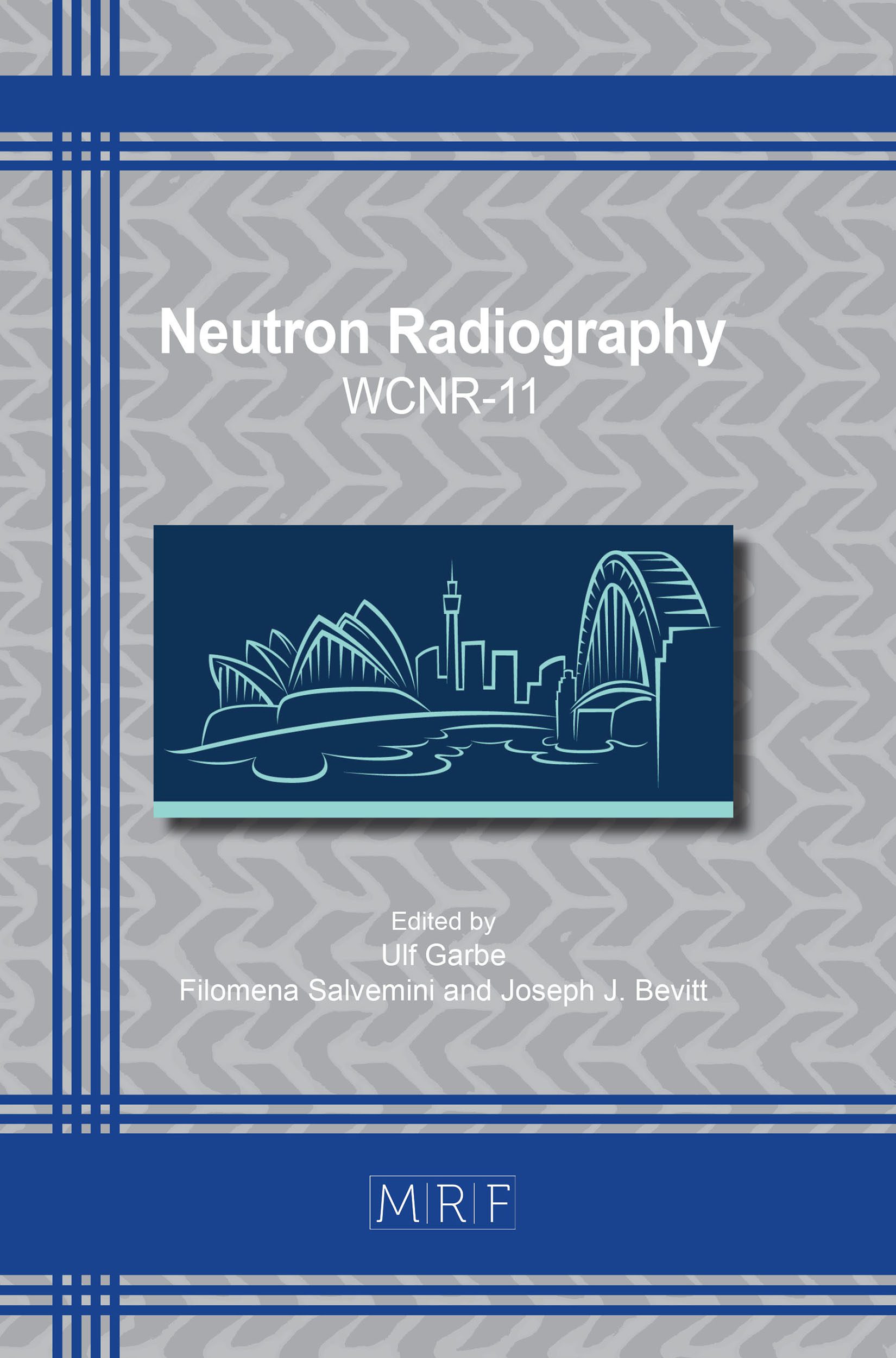Investigation of SINQ (Lead/Zircaloy) Spallation Target Structures by Means of Neutron Imaging Techniques
M. Wohlmuter, S. Dementjevs, P. Vontobel, J. Hovind, P. Trtik, E.H. Lehmann
download PDFAbstract. We report here on neutron imaging material studies of lead/zircaloy spallation target structures that are used to operate the Swiss Spallation Neutron Source (SINQ) facility at Paul Scherrer Institut (PSI). Lead provides a relatively high yield when exposed by the high intense proton beam delivered by the 590 MeV cyclotron [1]. With the melting point of 327.5°C, this target material gets liquid inside the Zircaloy cladding during the proton beam exposure of about 1 MW thermal power. Short beam interruptions and other shut-down phases result in the solidification of the lead structures. In order to investigate the long-term behavior of this relevant material during proton exposure methods of neutron imaging have been used: (i) on-line studies in thermal cycling time sequences during external heating of dummy rods and (ii) inspection of “spent” rods after dismounting from the rod bundle. While the first type of studies can be performed in a normal neutron imaging setup, the second kind of investigations needs a well-shielded configuration (NEURAP) together with an imaging method, insensitive to the accompanying gamma background from the highly activated rod samples.
Keywords
Spallation Neutron Source, Target Technology, Melting Point Lead, Neutron Imaging, Gamma Dose Rate, Dy Converter Technique, Imaging Plates, NEURAP
Published online 1/5/2020, 5 pages
Copyright © 2020 by the author(s)
Published under license by Materials Research Forum LLC., Millersville PA, USA
Citation: M. Wohlmuter, S. Dementjevs, P. Vontobel, J. Hovind, P. Trtik, E.H. Lehmann, Investigation of SINQ (Lead/Zircaloy) Spallation Target Structures by Means of Neutron Imaging Techniques, Materials Research Proceedings, Vol. 15, pp 287-291, 2020
DOI: https://doi.org/10.21741/9781644900574-45
The article was published as article 45 of the book Neutron Radiography
![]() Content from this work may be used under the terms of the Creative Commons Attribution 3.0 licence. Any further distribution of this work must maintain attribution to the author(s) and the title of the work, journal citation and DOI.
Content from this work may be used under the terms of the Creative Commons Attribution 3.0 licence. Any further distribution of this work must maintain attribution to the author(s) and the title of the work, journal citation and DOI.
References
[1] https://www.psi.ch/science/large-research-facilities
[2] https://www.psi.ch/sinq/sinq
[3] https://www.psi.ch/ucn/ucn-source
[4] https://www.psi.ch/sinq/neutra/sample-environment
[5] https://www.psi.ch/sinq/neutra/
[6] M. Tamaki et al., Dy-IP characterization and its application for experimental neutron radiography tests under realistic conditions, Nuclear Instruments and Methods in Physics Research A 542 (2005) 320–323. https://doi.org/10.1016/j.nima.2005.01.156
[7] W. Gong et al, J. of Nucl. Materials, 2018, submitted.
[8] P. Trtik et al., Improving the Spatial Resolution of Neutron Imaging at Paul Scherrer Institut The Neutron Microscope Project, Physics Procedia 69 ( 2015 ) 169 – 176, https://doi.org/10.1016/j.phpro.2015.07.024































